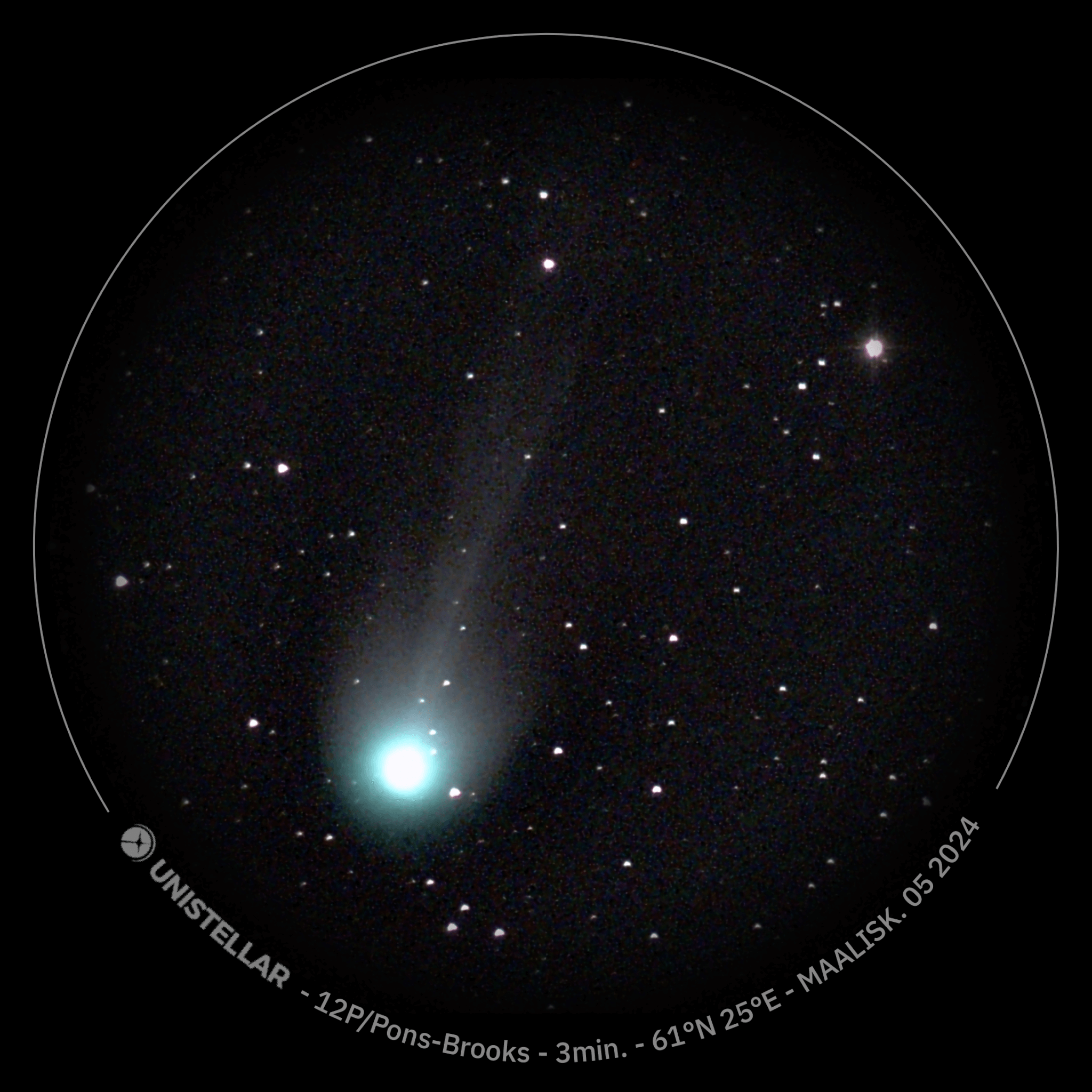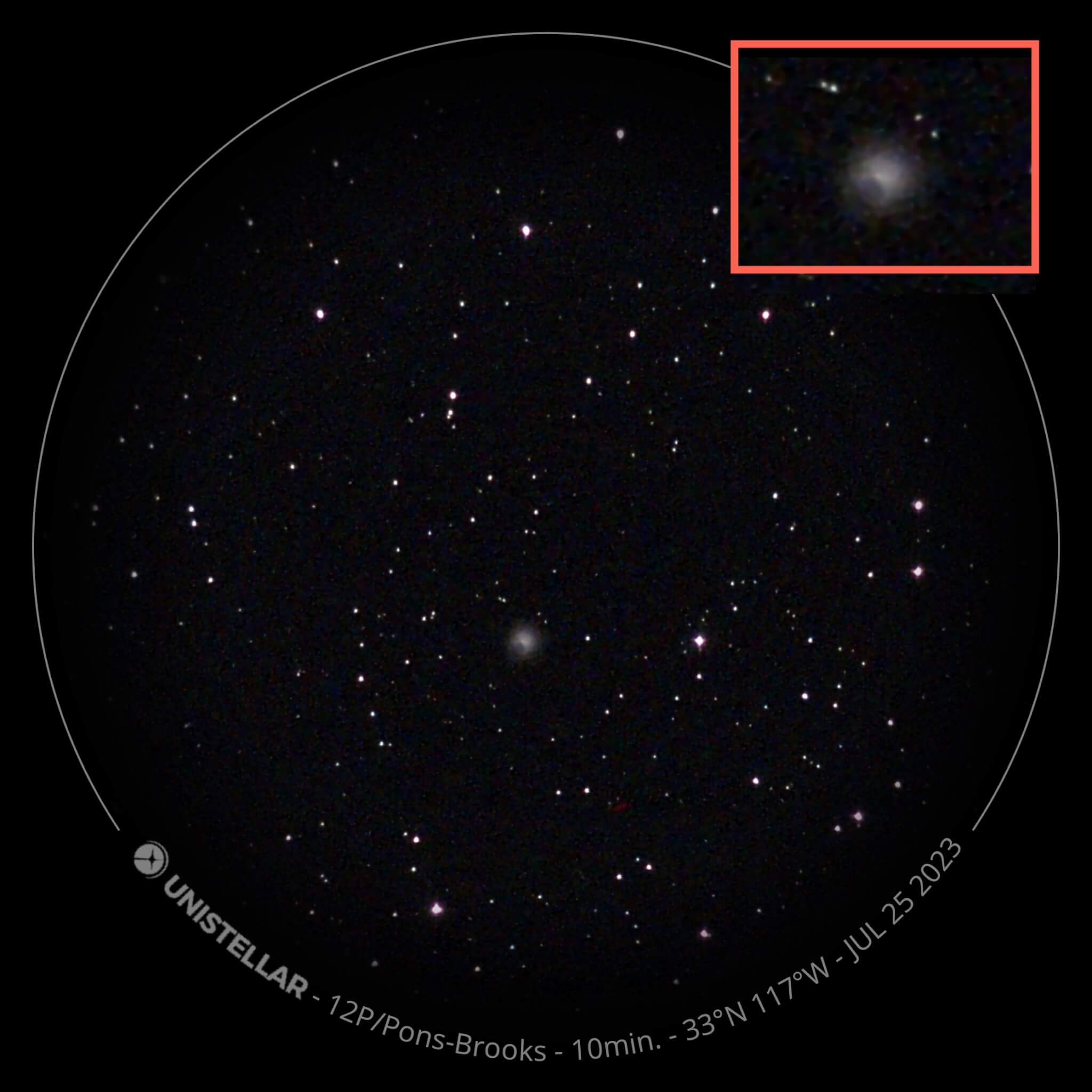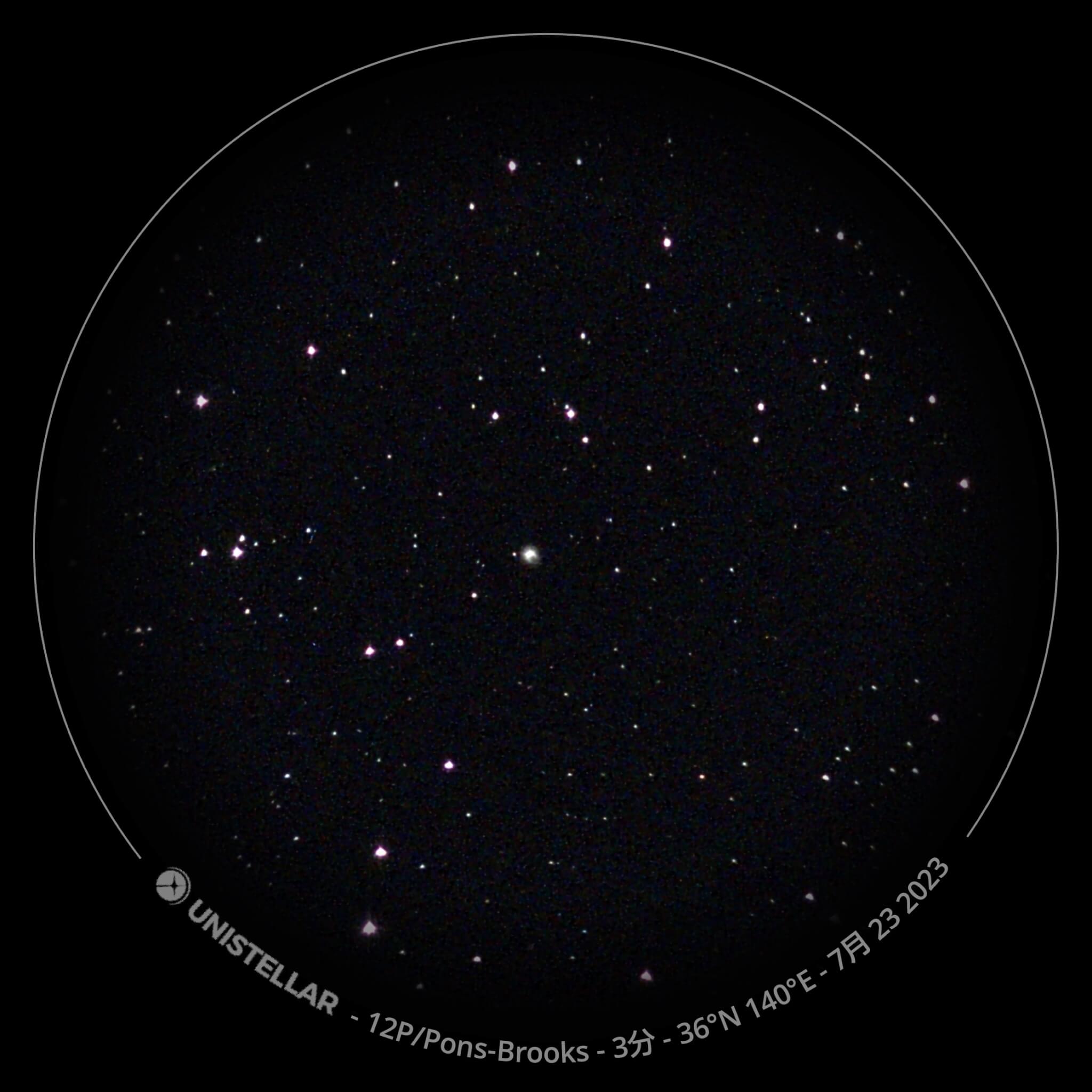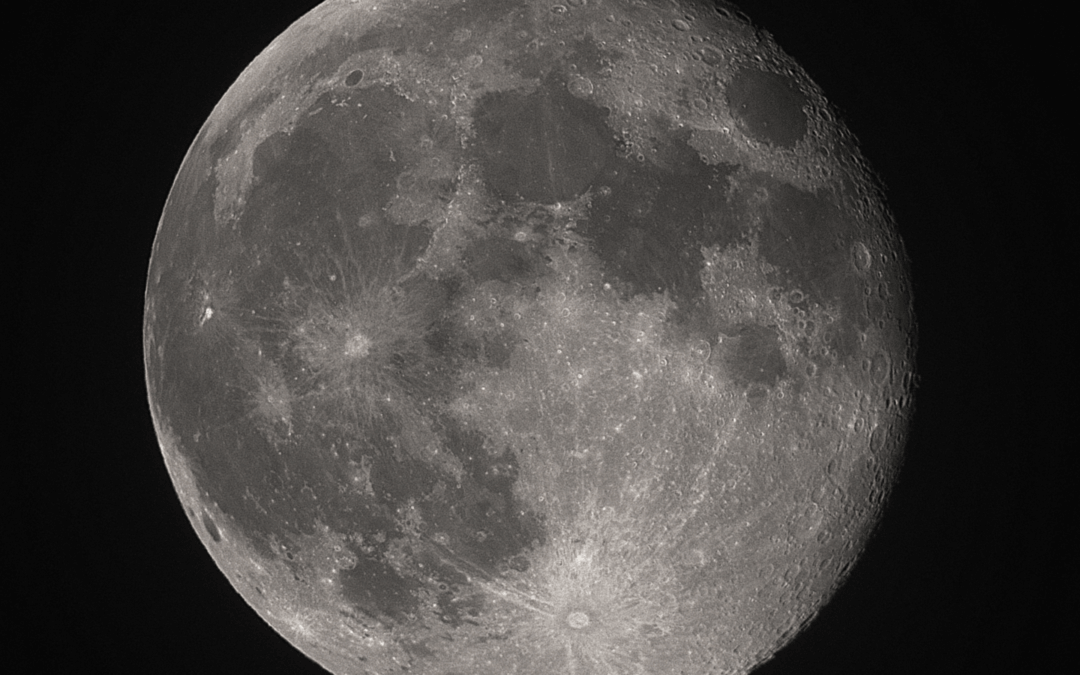Update: As we predicted in July, Comet 12P/Pons-Brooks is showing some beautiful activity. Comet 12P is projected to be visible to the naked eye around the time of its perihelion passage on April 21, 2024. This comet has proven itself to be a spectacular one already with its bright coma, structured tail, and repeated outbursts! In fact, the comet will be close to the Sun during the eclipse on April 8. If the comet is bright enough, and you are in the path of totality, you may be able to see it during the eclipse with aid or even with your naked-eye! It will especially help if the comet has another outburst near the time of eclipse, which is not far-fetched considering its history of outbursting since the summer of 2023. After perihelion, the comet will fade, so observe Comet 12P while you can!

Comet 12P/Pons-Brooks captured by Petri Kuossari (Finland) with his Unistellar telescope.
Comets have long captivated the imagination of stargazers and scientists alike. These celestial wanderers, composed of ice and dust, grace our skies with ethereal tails during their journeys through the solar system. And sometimes, they even show us earthlings some icy fireworks! One such comet, 12P/Pons-Brooks, stunned astronomers with a remarkable outburst recorded recently on July 19, catapulting it into the spotlight of astronomical curiosity.

Comet 12P/Pons-Brooks captured by Scott Kardel (US) with his Unistellar telescope.
Comet 12P/Pons-Brooks
Comet 12P/Pons-Brooks, known colloquially as Pons-Brooks, is a Halley-Type comet that boasts a rich history of cosmic exploration. Its elliptical orbit, with a period of 71 years, has taken it on numerous passages through the inner solar system. Long ago in 1812, astronomer Jean-Louis Pons first laid eyes on this wandering celestial object through a telescope in Marseille, the home of Unistellar! It was later rediscovered in 1883 by Willian Brooks, hence the hypenated name.
It turns out however that they were not the first to see this comet – by meticulously tracing the comet’s trajectory, researchers were able to link its recent appearances to those observed as far back as 1385 and 1457, painting a vivid picture of the comet’s ancient cosmic journeys.
An Impatient Outburst
Although Comet 12P/Pons-Brooks will reach perihelion in April of 2024, just in time to be visible in the darkness of the Americas’ total solar eclipse, it seems as if it couldn’t wait to put on a show!
This comet has had outbursts in the past, but perhaps none as interesting as the one noticed by amateur astronomers in Hungary just one week ago. During an outburst, a comet experiences a sudden and drastic increase in brightness, transforming it into a brilliant spectacle in the night sky as large portions of its icy makeup sublimate, or turn to gas, at once. This July 20th outburst brought about a staggering 100-fold increase in brightness, equal to a change in magnitude from about 17 to 12.
But the outburst’s peculiarities did not end there. Astronomers noticed that the resulting coma, the glowing cloud of gas and dust surrounding the comet’s nucleus, underwent rapid changes and expanded swiftly during the event. Strangely enough, the shape of the coma appeared distorted, hinting at an uneven distribution of activity across the comet’s surface. Some have even likened this unusual shape to “horns” that cause the comet to resemble Star Wars’ Millennium Falcon flying through space (and completing the Kessel run in 12 parsecs)!
This observation raises intriguing questions about the mechanisms that trigger such outbursts. Since this first outburst, Comet 12P has undergone several more outbursts. As researchers delve deeper into the enigmatic nature of this comet, we may one day unravel the secrets of its internal workings and gain a greater understanding of these mesmerizing celestial visitors.

The “horns” of Pons-Brooks are clearly noticable in this eVscope image by Keichii Fukui (Japan).
Observe Comet 12P/Pons-Brooks with your Unistellar Telescope
This comet is in the Unistellar App Catalog, so it is easy to observe! Simply search the comet’s name in your App and click GoTo to visit this comet, currently more than 530 million km (330 million miles) away. For the next few weeks, Pons-Brooks will continue to travel through the constellation Draco, so you can spot it from the Northern Hemisphere. Make sure to observe while it is still bright! Despite the outburst, the material ejected from the comet will continue to disperse, eventually causing the newly bright comet to fade once more.
To make a Science observation, simply visit the Comets Tutorial Page and follow the Observation section instructions for 1A: The target is in the Unistellar app’s database.
In the Recording field be sure the following information is entered:
Record duration : 20min
Exposure time : 3971ms
Gain : 25db
When you are done, don’t forget to submit a Comet Observation Report. Happy Comet Watching!
Further readings
3 Reasons to observe this month
Every month, discover three unmissable celestial events to observe with your Unistellar telescope.
Observing Eclipses on Jupiter: Cosmic Spectacles Through a Telescope
The latest Unistellar App Update, version V3.0, is now live. Explore a smooth stargazing experience !
Unistellar Community Included In Multiple Scientific Papers
Did you know Unistellar Citizen Astronomers are often cited in published scientific papers? Find out how you can contribute too!
What Are the Names of All the Full Moons in 2024?
Discover the enchanting names of the full moons in 2024. Delve into the unique character of each lunar spectacle and embrace the allure of the night sky.
New Unistellar App Update: Version 3.0
The latest Unistellar App Update, version V3.0, is now live. Explore a smooth stargazing experience !
What to Observe This November: Open Star Clusters and More
These Halloween deep-sky objects will add some light to those dark, spooky nights. Treats, tricks, and telescopes await!






